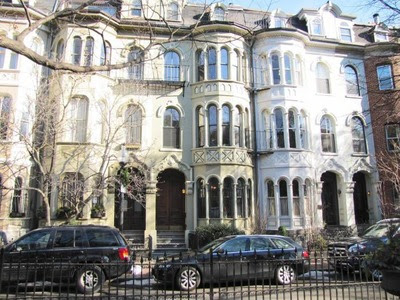06 Sep IRS Loses Challenge to South End Homeowners? Preservation Easement
 Much like the historic rehabilitation tax credit, private donations of historic preservation easements have been an effective federal-level historic preservation initiative. The Internal Revenue Service, however, launched a broad investigation into perceived abuses of the easement program over the last few years. One such investigation led the IRS to challenge deductions claimed by a Boston couple that donated a fa?ade preservation easement?restricting exterior changes to their mid-19th-century row house in the South End, notable for its Venetian Gothic-style fa?ade?to the Trust for Architectural Easements.
Much like the historic rehabilitation tax credit, private donations of historic preservation easements have been an effective federal-level historic preservation initiative. The Internal Revenue Service, however, launched a broad investigation into perceived abuses of the easement program over the last few years. One such investigation led the IRS to challenge deductions claimed by a Boston couple that donated a fa?ade preservation easement?restricting exterior changes to their mid-19th-century row house in the South End, notable for its Venetian Gothic-style fa?ade?to the Trust for Architectural Easements.The Internal Revenue Code provides an incentive in the form of an income tax deduction to taxpayers who donate a property interest for conservation purposes to a nonprofit or government entity. Owners of historic homes often take advantage of this tax benefit by granting a preservation easement in their property, which restricts their right to modify the exterior of their historic home. To be eligible for the tax deduction, the preservation easement must be in perpetuity. This means that the nonprofit or government entity to which the homeowner grants the easement can enforce the easement?s restriction against modifications of the home?s exterior against not only the owner who grants the easement but also against all future owners of the historic property. In return, the homeowner that grants the easement receives an income tax deduction equal to the value of the easement, essentially the difference in fair market value of the property with and without the restrictions placed on the property by the easement.
Some historic preservation nonprofits assist homeowners in qualifying for this tax deduction, and HBI is a good example of one. In fact, HBI currently holds seven preservation easements in its portfolio. In return for assisting a homeowner qualify for the deduction, HBI serves as the recipient of the preservation easement and manages the enforcement of the restrictions that the easement places on the historic property. Similar to other nonprofits, HBI typically also requests a contribution from the homeowner to compensate HBI for both assisting the homeowner in creating the easement and for HBI?s ongoing enforcement of the easement. The contribution is usually a percentage of the value of the ultimate tax deduction the homeowner receives for donating the easement to HBI. HBI also places easements on its own projects in order to monitor its investments after the properties are sold to willing buyers.
Preservation easements must satisfy several requirements of the Internal Revenue Code before the donor of the easement can claim the desired tax deduction. In the South End case, the code required the donors to compel the holder of the mortgage on their row house, in this case Washington Mutual Bank, to subordinate its creditor rights in the property to the right of the Trust for Architectural Easements to enforce the restrictions of the preservation easement in perpetuity. The code also required the donors to provide for the Trust to receive a portion of proceeds resulting from an unexpected extinguishment of the easement, such as insurance proceeds resulting from a fire that destroys the property or proceeds resulting from an eminent domain taking of the home. This requirement ensures that there would not be a situation in which the donors receive the full benefit of the easement donation (the tax deduction) while the Trust did not fully realize the full benefit of its gift?the opportunity to preserve the architectural value of the property in perpetuity. In other words, the regulation aims ensure that the Trust for Architectural Easements will receive a share of any proceeds in proportion to the value of its easement, which share it can then use to promote historic preservation elsewhere.
But it doesn?t end there. While the court of appeals ruled against the IRS and upheld the legitimacy of the donors? preservation easement, it sent the case back to the tax court for the IRS to argue another issue that the initial tax court never considered: did the deduction claimed by the donors exceed the fair market value of the donated easement? The IRS presented compelling evidence that the true value of the donated easement was virtually zero. If that proves to be the case at the subsequent trial in tax court, then the donors could be liable for substantial understatement of income tax and for substantial or gross valuation misstatements. Check back for a follow up discussion of the IRS?s argument and other issues likely to come up at the subsequent trial.




